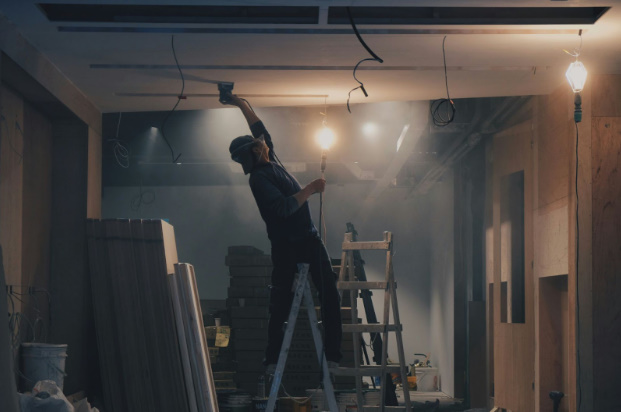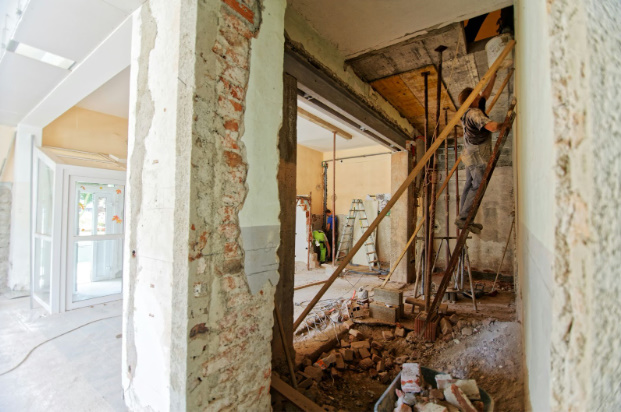Home renovations present unique opportunities to address both immediate aesthetic goals and long-term performance improvements.
Strategic planning ensures renovation investments deliver enhanced comfort, reduced operating costs, and increased property value. Understanding which upgrades provide the greatest returns guides homeowners toward decisions that truly transform living environments.
Why Plan Renovations Strategically
Unplanned renovations often miss opportunities to address underlying problems while focusing only on surface improvements.
Opening walls, updating systems, and reconfiguring spaces create chances to upgrade infrastructure that would cost significantly more to address later. Strategic thinking during planning phases maximizes value from renovation budgets.
Energy costs represent ongoing expenses that accumulate dramatically over decades of homeownership.
Renovations provide ideal timing to implement efficiency improvements that reduce these perpetual costs. The compounding savings from energy-efficient upgrades justify initial investments many times over.
Comfort issues, including temperature inconsistency, drafts, and humidity problems, often stem from inadequate building systems.
Cosmetic renovations that ignore these fundamental problems leave homeowners disappointed despite new appearances. Addressing comfort systematically during renovations ensures spaces function as beautifully as they look.
Modern building standards and homeowner expectations have evolved significantly from the construction practices of previous decades.
Homes built even 20-30 years ago often fall short of contemporary performance and efficiency standards. Renovation provides opportunities to bring older homes up to modern standards.
Setting Renovation Priorities
Comprehensive assessment identifies all potential improvements before committing to specific projects. Walking through homes systematically while documenting issues, inefficiencies, and desired improvements creates a complete picture. This thorough evaluation prevents overlooking important upgrades that would complement planned work.
Structural and system issues should take priority over purely aesthetic improvements. Foundation problems, roof deterioration, electrical inadequacy, and plumbing failures will only worsen if ignored. Addressing these fundamental concerns protects renovation investments in finishes and fixtures.
Budget allocation balances essential repairs against desired enhancements. Understanding total available resources guides realistic scope development.
Phasing approaches allow tackling the highest priorities immediately while planning subsequent improvements.
Professional assessment from builders, engineers, and trade specialists identifies problems and opportunities that homeowners might miss.
Their experienced perspectives reveal both challenges requiring attention and possibilities for enhancement. Early professional consultation guides realistic planning and budgeting.
The Value of Professional Renovation Services
Coordinating multiple trades, managing timelines, and ensuring quality outcomes challenge even experienced homeowners.
Professional home renovation services provide project management expertise that keeps complex projects on track.
Their involvement protects both budgets and schedules while delivering quality results.
Experienced renovation contractors understand how different improvement elements interact and depend on each other.
They sequence work logically, coordinate trades effectively, and solve problems that arise during construction. This expertise proves invaluable when multiple systems and finishes must integrate seamlessly.
Quality assurance throughout renovation processes ensures work meets standards and specifications.
Professional oversight catches problems during construction when correction remains straightforward. This monitoring prevents defects that would require expensive remediation after completion.
Permit navigation and building code compliance require knowledge that homeowners typically lack. Professional contractors understand local requirements and maintain positive working relationships with inspectors.
Their experience prevents permit delays and ensures renovations meet all regulatory standards.
Insulation and Building Envelope Improvements
Building envelope quality dramatically affects both energy consumption and interior comfort. Inadequate insulation, air leakage, and thermal bridging all compromise performance regardless of heating and cooling equipment quality. Renovation provides ideal opportunities to address envelope deficiencies.
Wall cavity insulation installation during renovations dramatically improves thermal performance. Once walls open for other work, adding or upgrading insulation adds minimal additional cost. This opportunistic approach to insulation upgrades delivers maximum value.
Air sealing prevents conditioned air from escaping while blocking outside air infiltration. Sealing gaps around windows, doors, penetrations, and structural connections reduces heating and cooling loads substantially.
Professional air sealing during renovations creates tight building envelopes supporting comfort and efficiency.
Window and door replacement eliminates major thermal weak points in building envelopes. Modern high-performance windows and doors dramatically outperform units from just 15-20 years ago. These upgrades reduce energy costs while eliminating drafts and improving acoustics.
Roof insulation improvements suit renovations involving ceiling or roof work. Increasing insulation depth to modern standards pays back through reduced heating and cooling costs. Attic ventilation working with insulation prevents moisture problems and extends roof life.
Electrical System Upgrades
Older homes often have inadequate electrical capacity for modern appliance loads and electronics. Circuit breaker panel upgrades, additional circuits, and outlet additions support contemporary lifestyles. Renovation provides convenient timing for electrical improvements, avoiding separate wall-opening projects.
GFCI and AFCI protection requirements in modern codes prevent electrical fires and shocks. Updating electrical systems to current safety standards protects families and property. These safety upgrades add minimal cost during renovations but would be expensive standalone projects.
Lighting upgrades to LED fixtures reduce electricity consumption by 75% compared to old incandescent lighting. Modern fixtures provide better light quality while offering dimming and color control options. Energy savings from LED lighting help fund other renovation improvements.
Smart home wiring, including network cabling and control system infrastructure, integrates easily during renovations. Installing infrastructure while walls are open costs far less than retrofitting later. Future-proofing through adequate wiring supports technology adoption as needs evolve.
Heating and Cooling System Modernization
Climate control systems fundamentally impact both energy costs and year-round comfort. Aging, inefficient heating and cooling equipment wastes energy while failing to maintain consistent temperatures. Renovation timing allows system upgrades without additional construction disruption.
Modern heat pump technology delivers heating and cooling with dramatically improved efficiency compared to older systems.
These versatile systems work effectively in various climates while reducing operating costs substantially. Heat pumps represent leading-edge residential climate control technology.
Professional heat pump service Hobart specialists provide expert installation and system design, ensuring optimal performance.
Proper sizing, placement, and installation determine whether heat pumps achieve their efficiency potential. Professional involvement ensures systems deliver promised comfort and efficiency benefits.
Ductwork inspection and sealing improve system efficiency when renovations access duct runs. Leaking ducts waste 20-30% of heating and cooling energy in typical homes. Sealing accessible ductwork during renovations captures significant efficiency gains.
Zoned heating and cooling systems provide independent temperature control for different home areas. Families save energy by conditioning only occupied spaces while maintaining different preferences throughout homes. Renovation provides ideal timing for installing zone control infrastructure.
Programmable and smart thermostats optimize system operation, matching occupancy patterns and preferences.
These controls reduce energy waste when homes are unoccupied or when occupants sleep. Modern thermostat technology delivers comfort while minimizing energy consumption.
Water Heating Efficiency
Hot water heating typically represents 15-25% of home energy consumption. Upgrading water heating systems during renovations captures substantial efficiency improvements. Modern water heaters dramatically outperform units from even 10-15 years ago.
Heat pump water heaters use electricity three times more efficiently than conventional electric resistance units. These systems extract heat from the surrounding air rather than generating it directly. The efficiency advantage translates into significant annual energy savings.
Tankless water heaters provide endless hot water while eliminating standby losses from traditional storage tanks. These compact units suit renovations where space constraints prevent tank installations. Proper sizing ensures an adequate hot water supply for household needs.
Solar water heating supplements conventional systems through free solar energy capture. These systems suit sunny climates and properties with appropriate roof orientations. Solar preheating reduces conventional water heater energy demands substantially.
Plumbing System Improvements
Aging plumbing systems benefit from upgrades during renovations, accessing concealed pipes. Replacing deteriorating pipes prevents future leaks and water damage. Modern materials, including PEX piping, install faster and more reliably than older technologies.
Low-flow fixtures reduce water consumption without sacrificing performance. Modern showerheads, faucets, and toilets use 20-60% less water than older fixtures. Water savings benefit both utility bills and environmental sustainability.
Leak detection systems provide early warning of plumbing problems, preventing expensive water damage. These monitoring systems suit renovation upgrades, protecting homes long-term. Early leak detection saves thousands in potential water damage remediation costs.
Ventilation and Indoor Air Quality
Proper ventilation removes moisture, odors, and pollutants, maintaining healthy indoor environments. Many older homes lack adequate mechanical ventilation, relying on air leakage for fresh air. Modern tight building envelopes require intentional ventilation systems.
Bathroom and kitchen exhaust fans are sized appropriately and ducted outdoors control humidity outdoors and remove contaminants.
Inadequate ventilation causes mold growth, material deterioration, and poor air quality. Quality exhaust ventilation protects both homes and occupant health.
Whole-house ventilation systems, including heat recovery ventilators, provide controlled fresh air while minimizing energy loss.
These systems suit tight, energy-efficient homes requiring mechanical ventilation. Balanced ventilation maintains air quality without wasting heating and cooling energy.
Sustainable Material Selection
Durable materials reduce lifecycle costs and environmental impacts through extended service lives.
Quality products lasting decades cost less over time than cheap alternatives requiring frequent replacement. Durability considerations should guide material selection throughout renovations.
Low-VOC materials improve indoor air quality by minimizing chemical off-gassing. Paints, adhesives, flooring, and cabinetry all come in low-emission options. These healthier material choices benefit occupants immediately and long-term.
Recycled content and sustainably sourced materials reduce environmental impacts while often offering superior performance. Many eco-friendly building materials now match or exceed conventional alternatives in durability and aesthetics. Sustainable choices align home improvements with environmental values.
Financial Planning and Incentives
Government rebates and incentives offset the costs of energy-efficient improvements substantially. Heat pump installations, insulation upgrades, and solar systems often qualify for significant rebates. Researching available incentives before finalizing plans maximizes financial benefits.
Energy bill savings from efficiency improvements compound over the years, creating substantial lifetime value. Calculating these ongoing savings reveals true investment returns exceeding simple cost comparisons. Many efficiency improvements achieve payback within 5-10 years through utility savings alone.
Property value increases from quality renovations and efficiency improvements, rewarding homeowners at sale time. Buyers increasingly value low operating costs and modern comfort systems. These market preferences support premium pricing for energy-efficient homes.
Conclusion
Strategic home renovation planning integrates aesthetic improvements with essential comfort and efficiency upgrades. Addressing building envelope, mechanical systems, and energy performance alongside visible improvements creates homes that perform as beautifully as they appear.
The combination of professional renovation services and modern, efficient systems transforms houses into comfortable, economical, and sustainable living environments.
Renovation represents a significant investment, justifying thorough planning that maximizes value and minimizes regrets. Homes upgraded comprehensively during strategic renovations serve families better while costing less to operate throughout decades of ownership.
The investment in quality renovation planning and execution pays dividends through enhanced comfort, reduced energy costs, and increased property value, supporting long-term financial security and improved quality of life.




